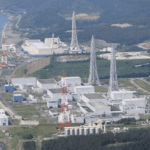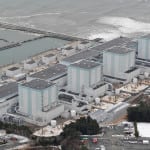In a ruling that stunned the nation, a district court in Japan awarded damages to 62 plaintiffs who lived near the Fukushima Daiichi Nuclear Power Plant before the 2011 disaster, finding that plant owner Tokyo Electric Power Co. (TEPCO) and the Japanese government were aware of risks to the plant and could have taken measures to avoid the triple meltdown.
A consistent narrative since the disaster has been that the March 11, 2011, earthquake—one of the most powerful ever recorded—was well beyond predictions by scientists who evaluated risks to the plant site. But the court found that government experts had in fact concluded in a 2002 report that there was a 20% chance of a magnitude 8.0 or greater earthquake striking the area over the next 30 years. TEPCO’s own experts calculated in 2008 that the site could potentially be hit by a 10-meter (m) tsunami. However, senior company officials felt the estimate was unrealistic and declined to make changes in the plant’s protective measures.
The 2011 quake was estimated at 9.0–9.1 on the Richter scale and produced a tsunami of around 13 m to 15 m at the plant. The plant’s seawall was only 5.7 m high, and the floodwaters knocked out the plant’s emergency generators in addition to causing other damage, making it impossible to continue cooling the cores and leading to the meltdowns.
According to reports in the Japanese media, the ruling by a district court in Maeshiba was the first to find TEPCO and the government negligent for the nuclear disaster. However, the damages were relatively small. The court awarded ¥70,000 ($621) to ¥3.5 million ($31,000) each to 62 of the 137 plaintiffs, for a total of ¥38.55 million. (Damages in Japanese civil cases tend to be much smaller than those in the U.S.) TEPCO is already paying compensation of ¥100,000 per month to victims who were forced to evacuate the area around the plant.
Still, the finding of negligence and the court’s harsh criticism of TEPCO and government bureaucrats—it found specifically that safety took a back seat to economics in management and oversight of the plant—is likely to rock the Japanese nuclear sector, as other such suits are still pending. The government has argued that it could not have forced TEPCO to take the necessary protective measures, but the court disagreed. Both the government and TEPCO attacked the reliability of the 2002 and 2008 studies, calling them unscientific and at odds with the opinions of other experts. It is unclear what effect the ruling will have on the other cases around Fukushima, or if TEPCO plans to appeal.
Six years after the disaster, Japan’s nuclear fleet remains mostly shut down. Only one plant, the two-unit Sendai facility, has returned to full-time operations. Units 3 and 4 at the Takahama plant were restarted in early 2016 but then shut down two months later following a court order against their operation. Attempts to restart other reactors have been blocked by court rulings. Efforts to inspect the damaged cores at the ruined plant have encountered repeated difficulties, and cleanup is expected to take decades.
—Thomas W. Overton, JD is a POWER associate editor (@thomas_overton, @POWERmagazine).










